When the Barbie trailer dropped I, like many of us, was glued to my computer, letting the color and camp and vibrancy wash over me.
But it wasn’t until the end of the trailer that the tears started pricking at my eyes.
An older woman’s VO says to Barbie,
“Humans only have one ending.
Ideas live forever.”
When I turned on the closed captioning to see who delivers the line, then the tears really began flowing.
“RUTH,” it said.
Could it be?
Could the older woman in the Barbie trailer be representing THE Ruth Handler (may she rest in peace)?
…so why was I crying over a joyfully bonkers movie trailer featuring an old woman named Ruth?
Because in 2014, Ruth Handler held the key to the piece of work that I am most proud of in my entire career. A piece of work that changed the game for the Barbie brand, and for the millions of young people that playing with Barbie inspires every day.
This work was not just a repositioning; it was a reclamation that Barbie is about so much more than just what she wore, or her pink Dream Houses, or Ken. And it proved that believing in an idea for the long-term, not just for the moment, has incredible creative potential.
Eight years ago, a Barbie movie would have been unimaginable. In just a week’s’ time, it’ll be here.
Let’s look at how that pipe dream became a possibility to imagine.
Dear Toto, we’re not in 1959 anymore.
It’s 2014. Ellen breaks the internet with a selfie at the Oscars. Hillary Clinton has not even announced her second (and ill-fated) presidential run. Harvey Weinstein is still making movies. No pink pussy hats have been sewn.
And yet, things were shifting. Sheryl Sandberg is asking us to “Lean In.” Beyoncé is singing onstage with the word “FEMINIST” behind her. The most popular children’s doll is blonde and blue-eyed and comes from a movie about two sisters encouraging us all to “let it go.”
Despite all of these ‘girl power’ moments, it wasn’t a great time for Barbie.
Her lunch was being eaten by Elsa, and Millennial moms - women who had played with Barbie growing up - were showing less and less interest in buying the doll for their daughters. Her body shape, blondeness and whiteness weren't resonating and for many, represented the type of male gaze that we’ve been trying to outrun for decades. Something had to be done for this iconic brand that had charmed little kids since 1959.
That’s where we came in. A team of us from advertising agencies in New York and San Francisco, assembled with one common goal:
“Bring Barbie back.”
In this cultural climate, we needed a reason for Barbie to exist. There were plenty of other toys (see the aforementioned “Let It Go” sisters). Why did Barbie need to stick around? What value did she provide to today’s progressive mother, and the progressive young daughter she was raising?
Should we just (*gasp*) let her fade away?
And then one night, eating a wilted salad at a dark desk in my midtown agency office, it fell into my lap. Or more specifically, she did.
Ruth Handler.
Because despite what people may think they know about Barbie today, they often miss this one crucial fact.
In 1959, Barbie wasn’t created by a man.
She was created by a woman.
A woman who refused to take her ‘rightful’ place as the 1950s housewife, warming the dinner and cleaning up after the kids.
A woman who believed in her own ideas and inventions, and backed herself to the hilt.
A woman who said, in 1959
“My whole philosophy of Barbie was that, through the doll, the little girl could be anything she wanted to be. Barbie always represented the fact that a woman has choices.”
There it was. Barbie’s original reason for being, lost to the sands of time.
Barbie isn’t a vapid plaything to dress up in the latest fashions. Barbie is a tool for creativity, self-discovery, and possibilities.
But Millennial moms had forgotten that, and therefore our job was clear.
We needed to help them remember that playing with Barbie is so much more than just make-believe; it’s the time when a little girl tries on all of the possibilities of who she can become.
The movement for potential and possibilities
So we showed them a world in which little girls dream of endless possibilities; and reminded them of the place where it all started: playing with Barbie on their bedroom floors.
The idea was called “Imagine the Possibilities.”
It was an unequivocal hit. But it wouldn’t be enough to undo years of frustration with Barbie’s singular depiction of what a woman looks like. So Barbie was going to have to change too.
And change she did. With new body shapes, skin tones, hairstyles, and more.
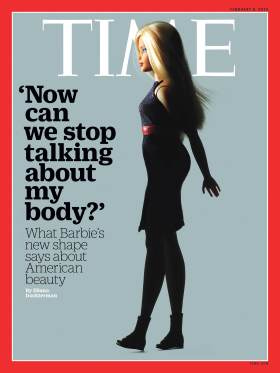
This new way of seeing Barbie prompted not just Millennial moms to take notice; everyone was talking about how Barbie had revitalised itself and found a purpose that could inspire women and girls everywhere.
“This empowering new Barbie ad will make you want to be a little girl all over again.”
“Imagine the possibilities: Has Barbie finally found a way to empower a new generation of women?”
“Barbie’s ‘You Can Be Anything’ ad is all about little girl power”
From potential to power
From 2015 until 2023, Barbie has continued to support the imaginations and possibilities of young girls, including The Dream Gap project, which is designed to help inspire girls into career paths where women underindex; the Sheroes doll line, which represents inspiring women from all walks of life; and creating inclusive Barbie dolls who are disabled, or wear a hijab, or have a skin condition.
And now we have the movie. With a cast of characters as diverse as the rainbow world they inhabit, seemingly based on the core premise that Barbie represents the fact that a woman has choices. She has the power to take those choices and run with them. And that’s the legacy we’re leaving behind: to empower more and more generations of little girls to truly believe that they can be anything.
Without Ruth Handler’s spirit visiting me at my desk all those late nights ago, without the work of an incredible team of (s)heroes working tirelessly on pink presentations and challenging ourselves to dream bigger and bigger, and without client partners who were standing side-by-side with us, the Barbie we know and love might have been relegated to a dusty corner of a toy shop.
Instead, she’s getting a major film release in a few weeks’ time.
Moreover, she’s inspiring marketers and ad agencies everywhere to stick with an idea, long after its initial success. To harness a purpose that is true to a brand and continue to tell that story in fresh and exciting ways, again and again.
Most importantly, she’s inspiring a new generation of young people to dream wildly, imagine boldly, and see the endless possibilities in front of them, all by playing with their favorite toy.
And in my corner of the world, she set me off on a path of self-discovery, feminist activism and unrelenting belief in reaching gender equity that informs the work I do and the way I live today.
Not bad, Babs.
***
So back to this trailer and my big soppy tears.
Ruth says to Barbie, “Humans only have one ending.
Ideas live forever.”
Eight years after the launch of “Imagine the Possibilities,” and seeing everything that came after, I’m inclined to agree.
Thanks again, Ruth. For everything. 🩷
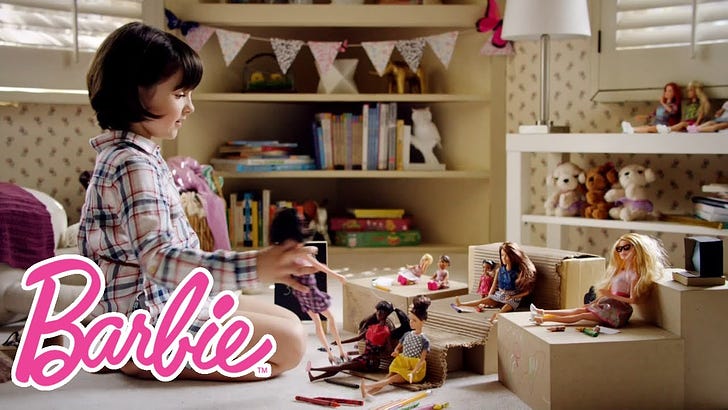


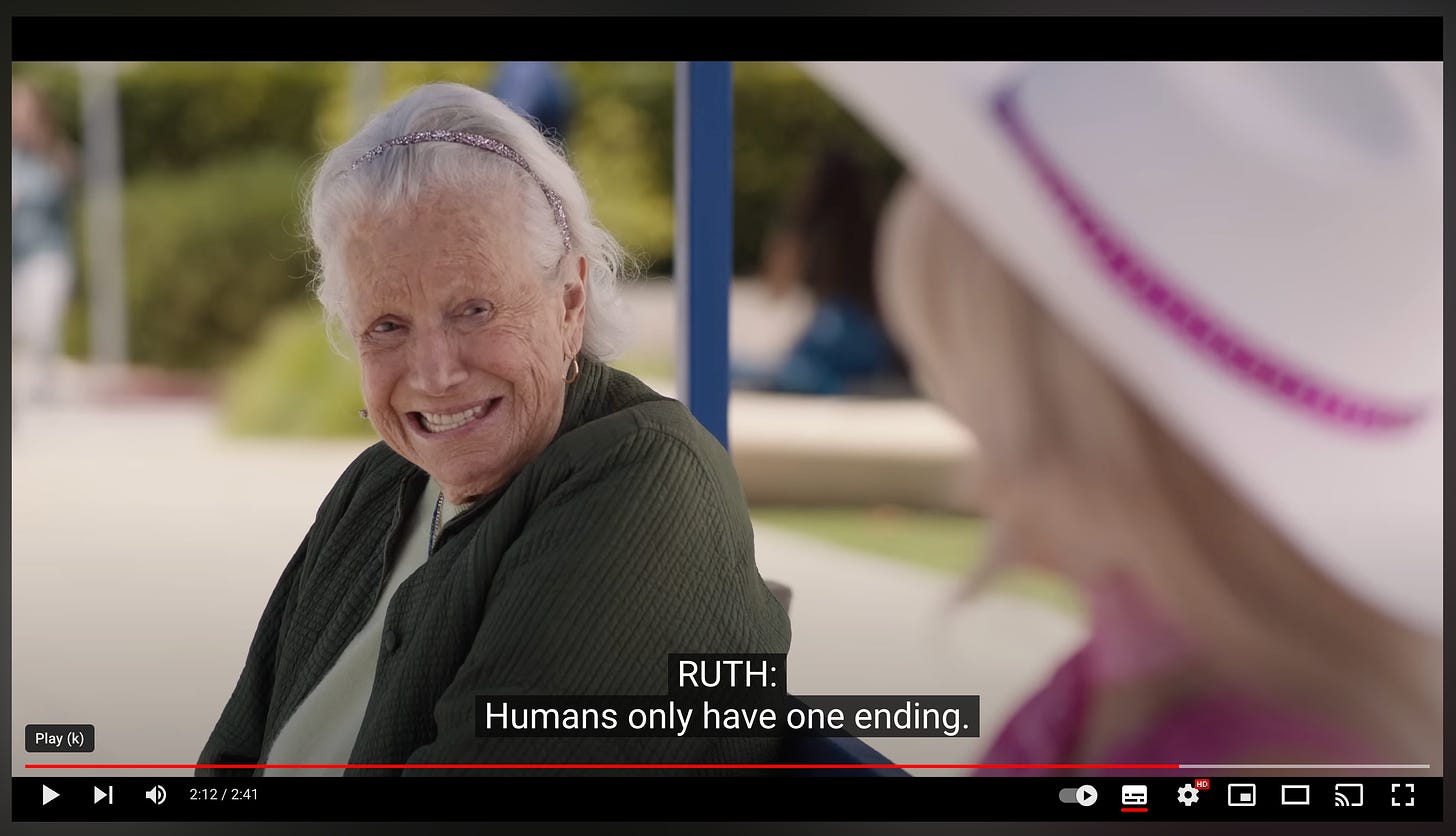
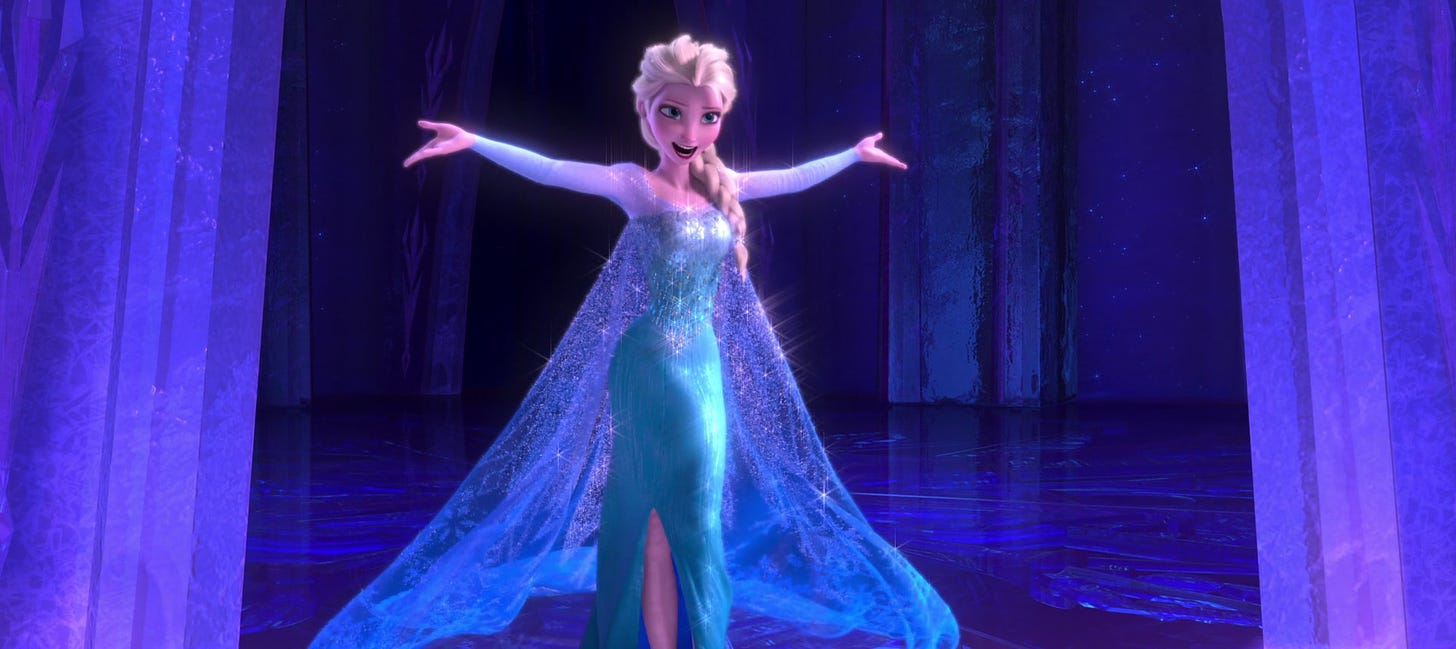
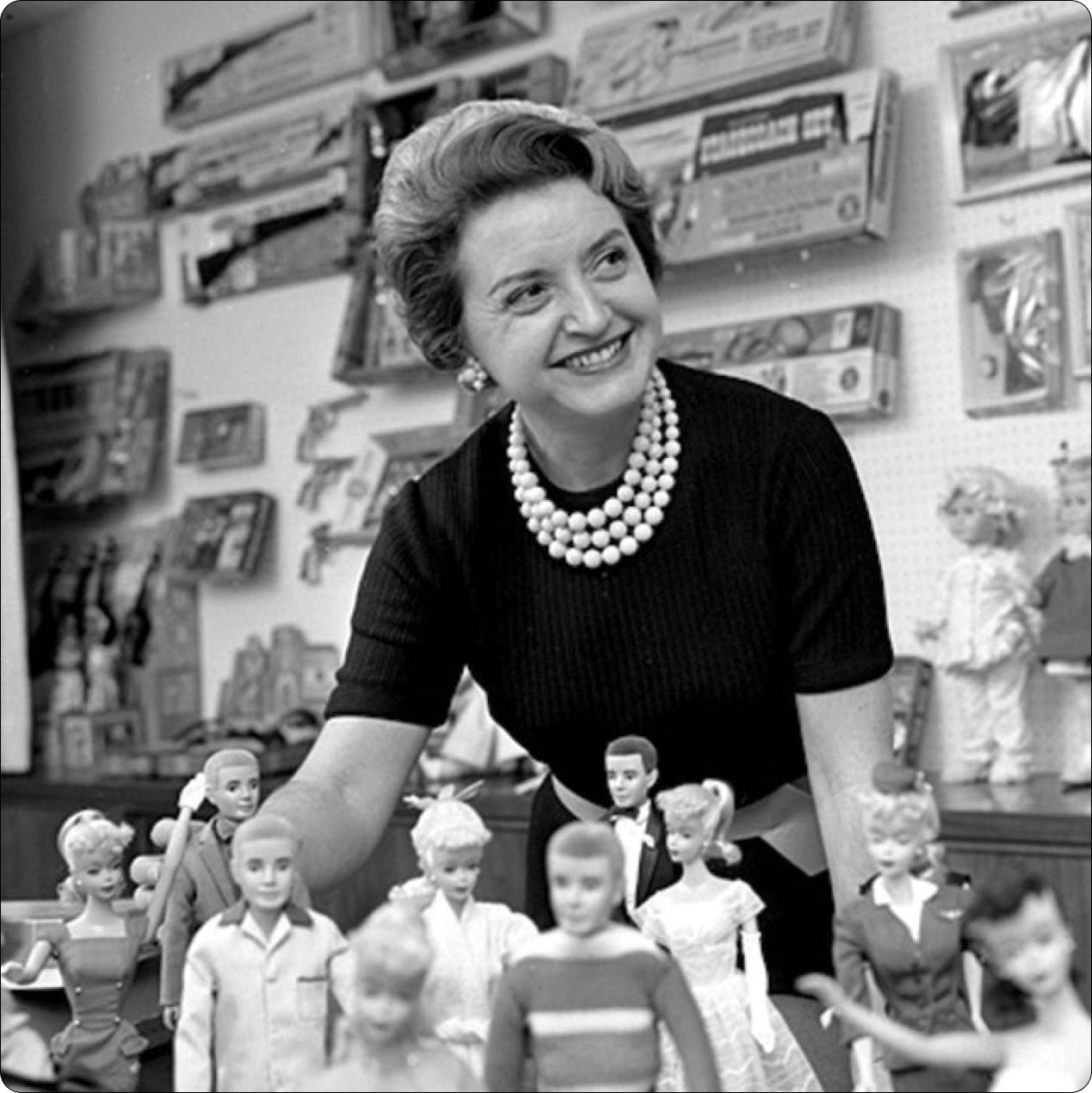
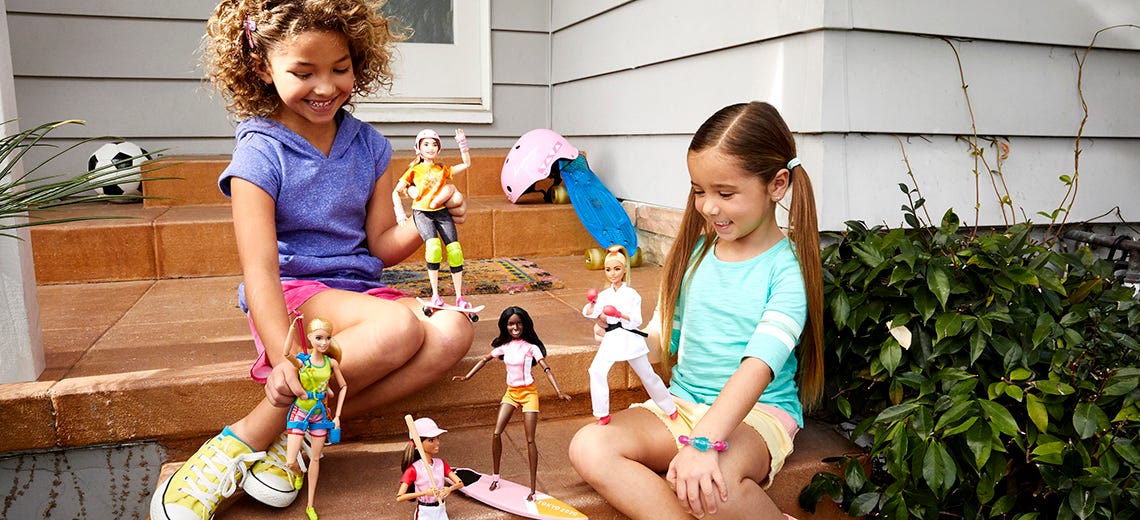
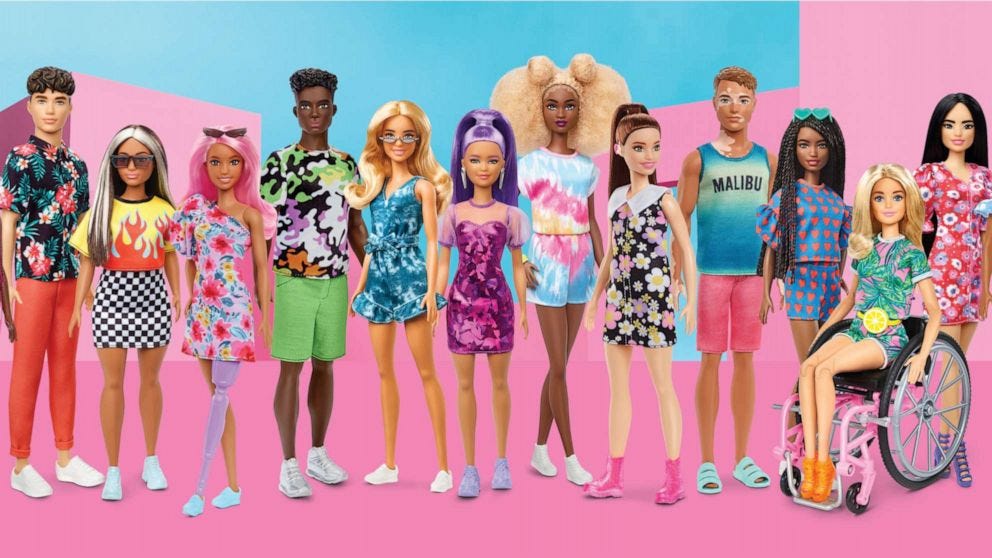
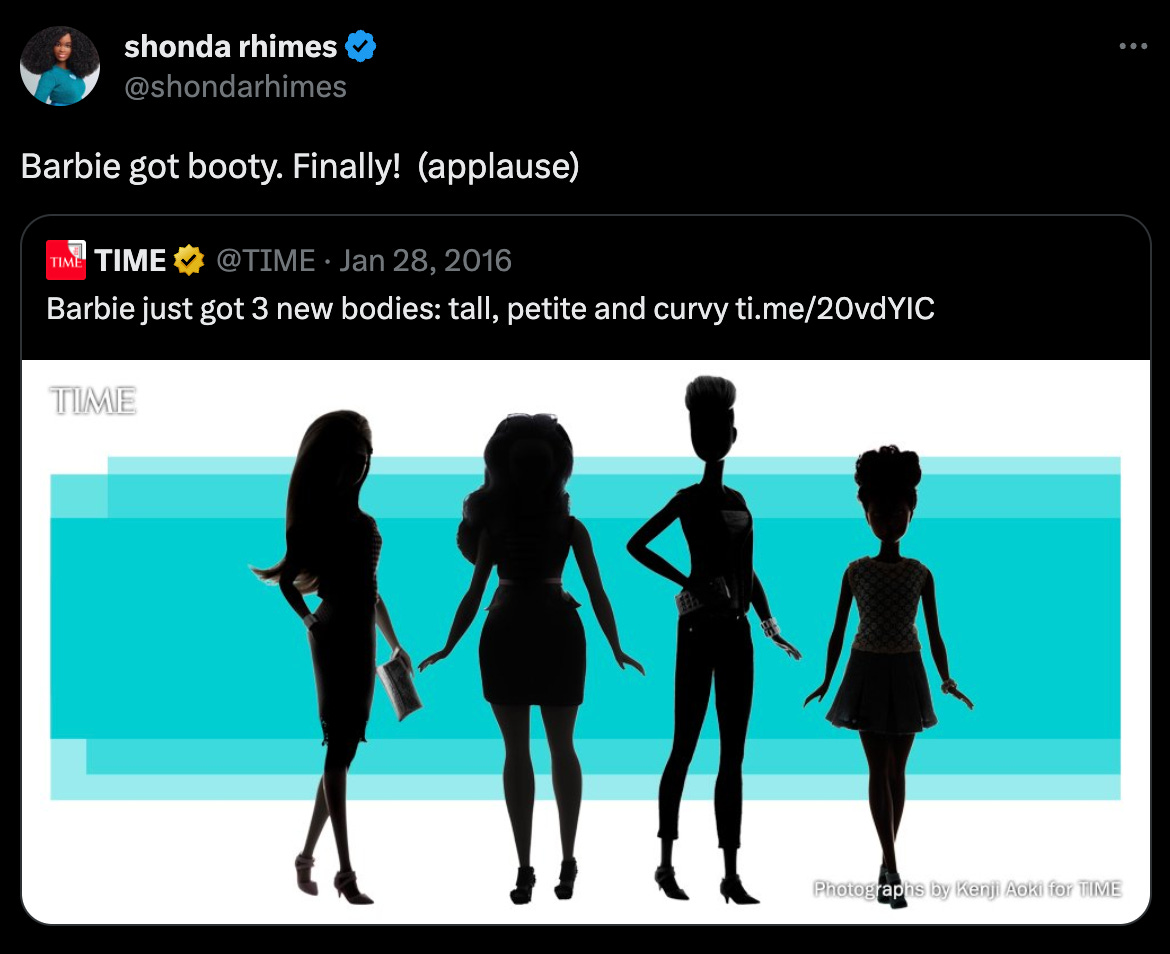


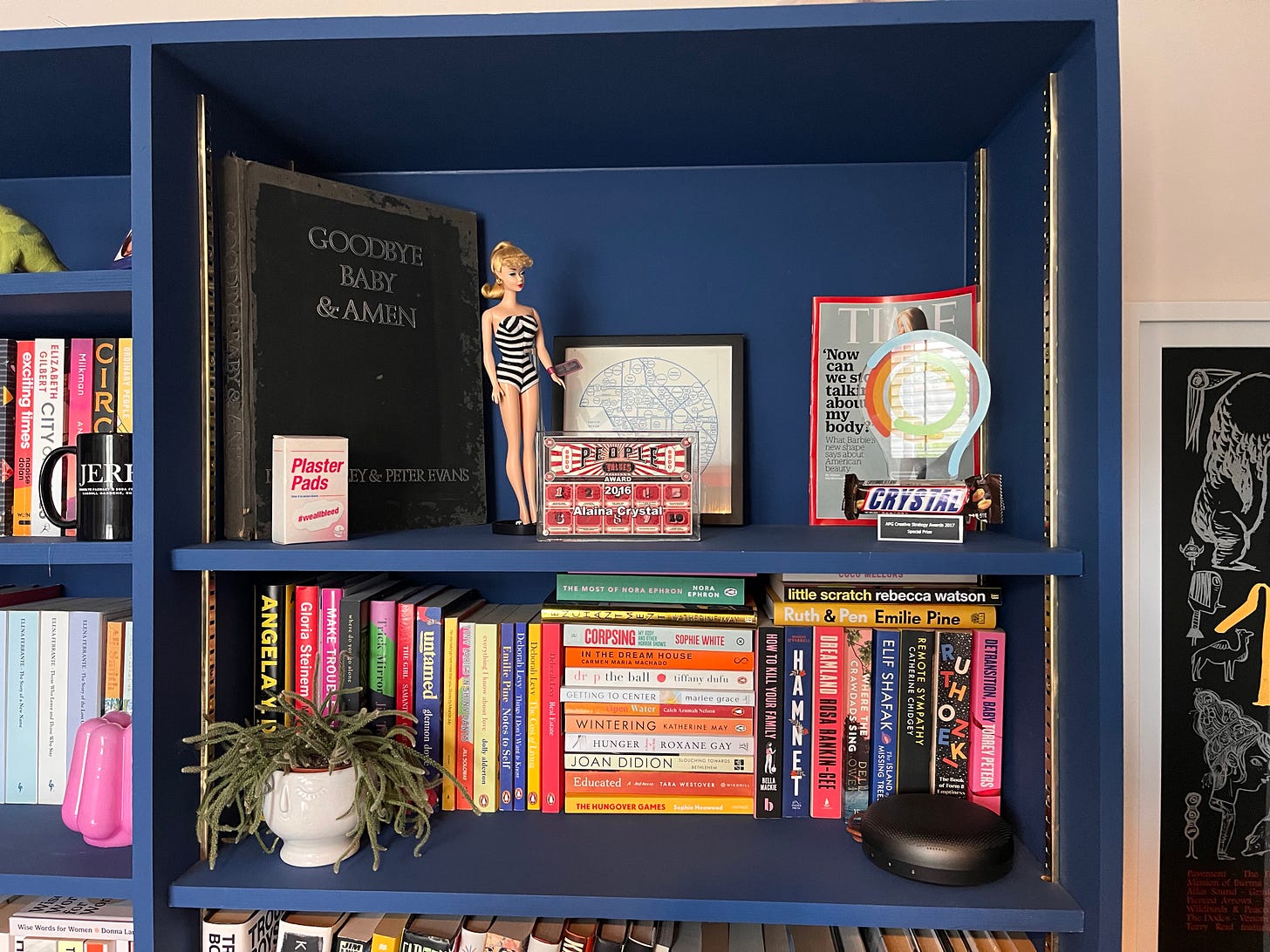
“Incredible” is an understatement!!! So, so proud!!!
/chooses the pinkest, Barbiest of heart emojis/
💖